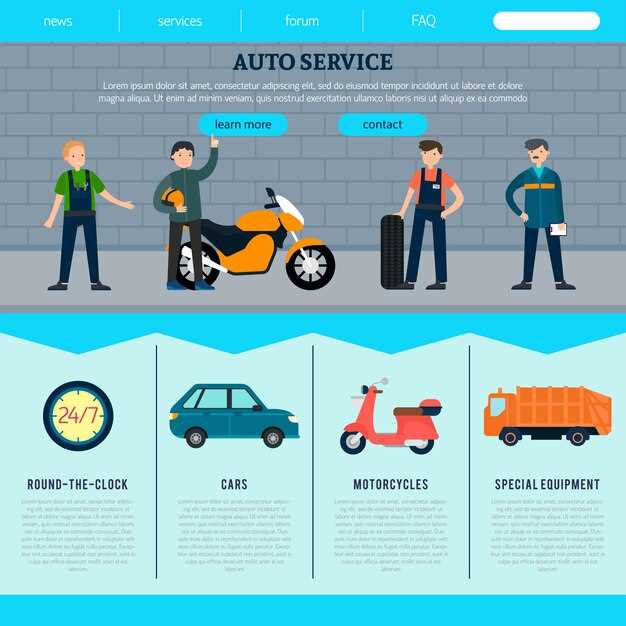

Motorcycle insurance is a crucial aspect of owning and operating a motorcycle, providing protection against potential financial losses due to accidents, theft, and other unforeseen events. Understanding the ins and outs of motorcycle insurance can help riders make informed decisions about the coverage they need. This guide aims to demystify the various components of motorcycle insurance policies and highlight the essential factors that riders should consider.
When selecting an insurance policy, it is important to evaluate the different types of coverage available. Standard motorcycle insurance generally includes liability coverage, which protects you if you are found at fault in an accident, as well as collision and comprehensive coverage that addresses damage to your motorcycle itself. Familiarizing yourself with these terms and their implications can help you customize your policy to suit your individual riding needs.
In addition to understanding the types of coverage, riders should also consider the impact of factors such as their riding history, the type of motorcycle they own, and their geographical location on insurance premiums. These elements can significantly influence the cost of your insurance, and being aware of them can empower you to make choices that can potentially lower your rates. With the right information, finding a suitable motorcycle insurance policy can be a straightforward process, ensuring you stay protected while enjoying the open road.
Understanding Motorcycle Insurance: A Complete Guide
Motorcycle insurance is a specialized policy designed to protect riders and their motorcycles from financial loss. It typically covers damages from accidents, theft, and liability claims. Understanding the components of motorcycle insurance is crucial for every rider.
There are several key types of motorcycle insurance coverage. Liability coverage is mandatory in most states, providing protection against claims for bodily injury and property damage to others if you are at fault in an accident. Collision coverage helps pay for the repair or replacement of your motorcycle after an accident, regardless of fault. Comprehensive coverage protects against non-collision incidents, such as vandalism, fire, or natural disasters.
When obtaining motorcycle insurance, consider factors such as the bike’s value, your riding experience, and your location. Insurance companies often evaluate these elements to determine rates. Improvements or modifications to your motorcycle could also influence your premium, so ensure you disclose any changes to your insurer.
Riders should also be aware of optional coverages, including uninsured/underinsured motorist protection, which covers damages if you are involved in an accident with an at-fault driver who lacks sufficient insurance. Personal injury protection (PIP) may cover medical expenses for you and your passengers, regardless of fault, making it a key component of a comprehensive policy.
Discounts are commonly available. Many companies offer reductions for completing motorcycle safety courses, bundling policies, or having a clean driving record. It is wise to shop around, compare quotes, and understand the specifics of each policy before making a decision.
In conclusion, motorcycle insurance is essential for protecting both you and your investment. Being informed about the different types of coverage and available discounts can help you make the best choices for your needs as a rider.
Choosing the Right Motorcycle Insurance Coverage for Your Needs
Selecting the appropriate motorcycle insurance policy is crucial for protecting yourself and your investment. Understanding the various types of coverage available can help you make an informed decision that aligns with your requirements.
Here are the main factors to consider when choosing motorcycle insurance coverage:
-
Liability Coverage: This is fundamental for all riders. It covers damages to others’ property and medical expenses in case of an accident where you are at fault. Ensure you meet the minimum legal requirements for your state.
-
Collision Coverage: This policy pays for damages to your motorcycle resulting from a collision with another vehicle or object, regardless of fault. It is particularly important for new or high-value motorcycles.
-
Comprehensive Coverage: This protects against non-collision incidents, such as theft, vandalism, or natural disasters. If your motorcycle is financed, lenders often require this coverage.
-
Uninsured/Underinsured Motorist Coverage: This provides protection if you are involved in an accident with a driver who has insufficient or no insurance. It can help cover your medical costs and damages.
-
Medical Payments Coverage: This policy helps cover your medical expenses in the event of an accident, regardless of who is at fault. It extends to passengers as well.
To determine the right policy, consider the following steps:
-
Assess Your Riding Frequency: If you ride frequently, opting for more comprehensive coverage may be beneficial. For occasional riders, basic liability might suffice.
-
Evaluate Your Motorcycle’s Value: Higher value bikes warrant additional protection. Consider comprehensive and collision coverage if your motorcycle is worth a significant amount.
-
Check State Requirements: Familiarize yourself with your state’s minimum insurance requirements to ensure compliance and avoid penalties.
-
Compare Quotes: Different insurance companies offer varying premiums and coverage options. Get multiple quotes to assess which policy provides the best value.
-
Consider Discounts: Inquire about possible discounts for safe riding courses, bundled insurance policies, or membership in motorcycle associations.
Choosing the right motorcycle insurance policy involves careful consideration of your needs, riding habits, and the value of your motorcycle. By evaluating these elements, you can select a policy that provides adequate protection while fitting your budget.
Key Factors That Influence Your Motorcycle Insurance Premiums

Understanding the dynamics behind motorcycle insurance premiums is crucial for securing an affordable policy. Several key factors influence how much you will pay for coverage, and being aware of these elements can help you make informed decisions.
One of the primary determinants is the type of motorcycle you own. Factors such as the brand, model, and engine size can significantly impact your premium. Sport motorcycles, for example, often come with higher insurance costs due to their performance capabilities and associated risks.
Your riding experience also plays a vital role in determining your premiums. Experienced riders are generally viewed as lower risk by insurance providers, leading to potential discounts. In contrast, new riders may face higher rates as they are perceived as more likely to be involved in accidents.
Your age and location are additional critical factors. Younger riders typically face higher premiums due to a lack of riding history. Furthermore, living in an area with higher crime rates or accident statistics can result in elevated premiums, as insurers consider local risks when calculating costs.
Your claims history is another essential component. A record of frequent claims can signal to insurers that you are a higher risk, resulting in increased rates. Conversely, maintaining a clean driving record may qualify you for safer driver discounts.
Lastly, the level of coverage you choose will influence your policy price. Opting for comprehensive or collision coverage will increase your premium compared to basic liability coverage. Understanding these factors can help you tailor your motorcycle insurance policy to your needs while potentially saving money on premiums.
Navigating Claims Process: What to Do After an Accident

After an accident, the first step is to ensure everyone’s safety and seek medical attention if necessary. Once the immediate concerns are addressed, you should begin the process of filing an insurance claim. This process can seem daunting, but by following a few key steps, you can navigate it smoothly.
Start by gathering all necessary information at the scene of the accident. This includes taking photos of the accident site, noting the details of the other involved parties, and collecting witness statements. Having thorough documentation will support your case and expedite the claims process.
Notify your insurance company as soon as possible. Contact your insurer and provide them with the details of the accident, including date, time, location, and a brief description of the events. Make sure to reference your specific policy number to ensure they can quickly access your information.
Next, review your insurance policy. Familiarize yourself with the coverage details, including deductibles, limits, and any necessary steps outlined for filing claims. Knowing what your policy covers can help you set realistic expectations regarding compensation and the claims process timeline.
Once your insurer assigns a claims adjuster, maintain open communication. The adjuster will guide you through the next steps, which may include submitting additional documentation, medical records, or receipts related to the accident. Be prompt and thorough in your responses to prevent delays.
If the accident involved significant damage, you may need to arrange for vehicle assessments. Your insurer will typically recommend approved repair shops, so consult with your adjuster before making decisions about where to repair your motorcycle.
Finally, keep a record of all correspondence with your insurance company and retain copies of any documents submitted. This record-keeping will be invaluable if any disputes arise during the claims process. By staying organized and proactive, you can navigate the claims process effectively after an accident.
